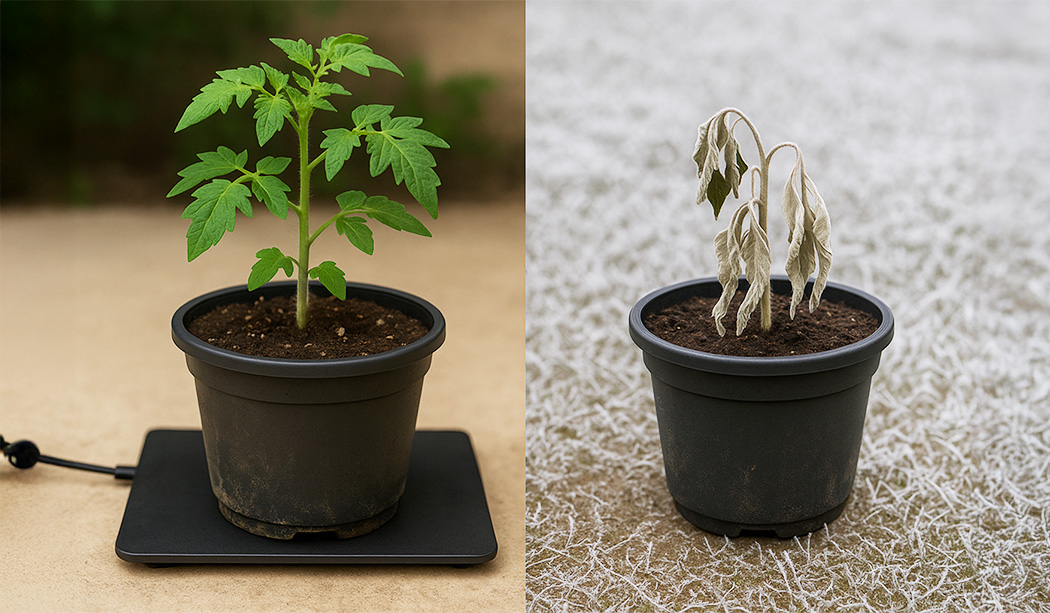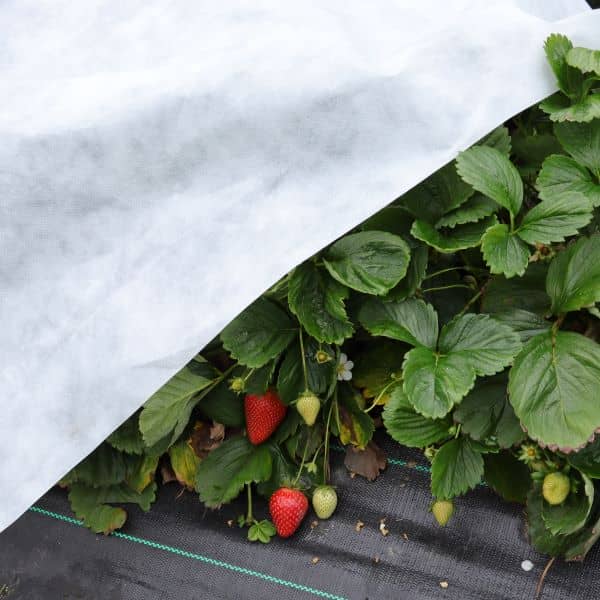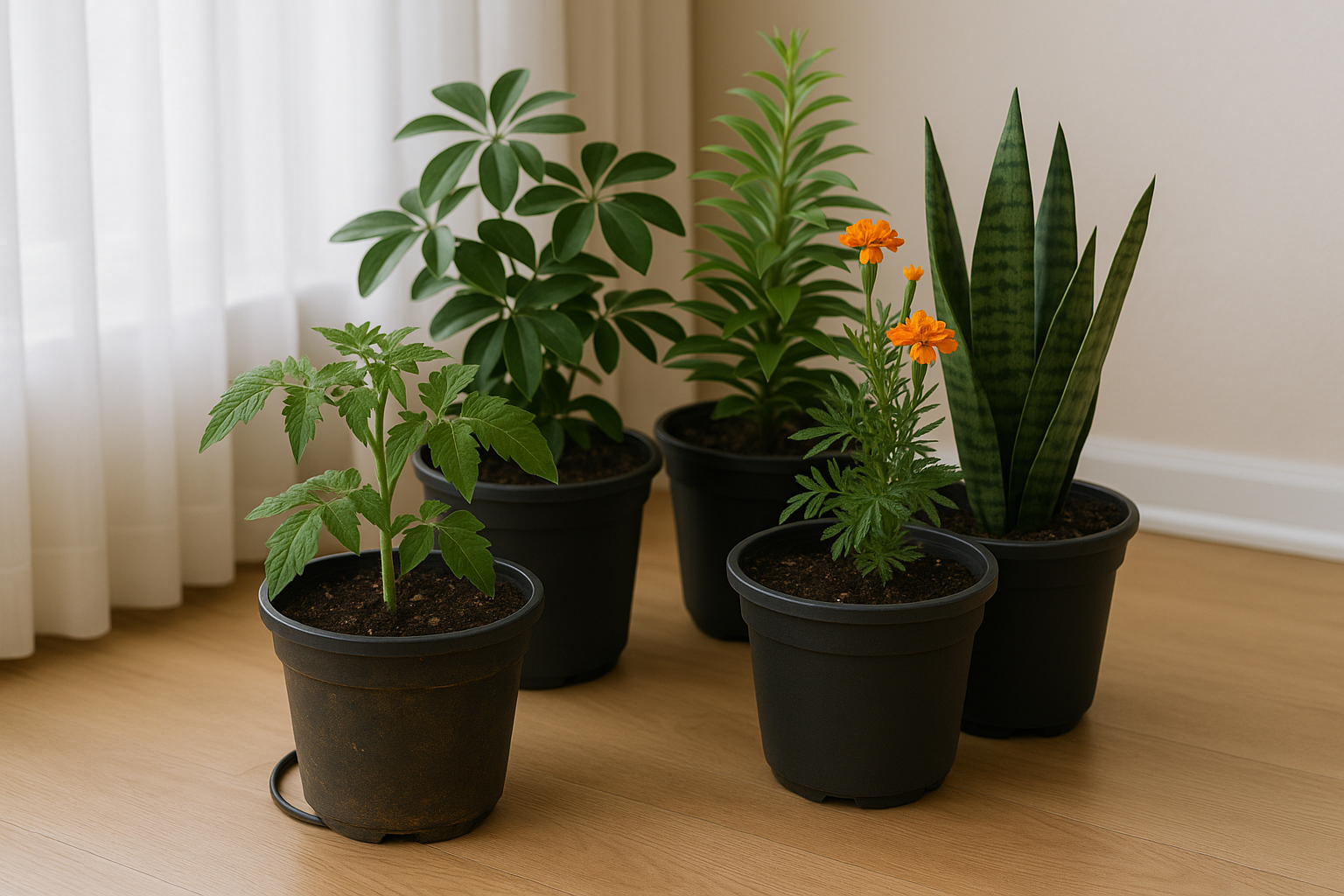As the temperatures drop in Australia, many gardeners face the challenge of protecting their plants from frost, cold winds, and freezing soil. Whether you’re growing delicate flowers, vegetables, or fruit trees, winter can be harsh on plants if proper care isn’t taken.

You can use a variety of techniques to keep your plants warm during winter, like using frost cloths, a greenhouse heater, heat mats, mulching to retain soil heat, etc.
In this post, you will learn in detail about using these techniques more effectively.
Understanding How Cold Affects Plants
Cold weather can damage plants in several ways:
- Frost Damage: Freezing temperatures can cause ice crystals to form inside plant cells, leading to cell rupture and tissue damage.
- Root Damage: Cold soil temperatures slow down root function, reducing water and nutrient absorption.
- Cold Winds: Dry, cold winds can strip moisture from leaves, causing dehydration and stress.
- Reduced Sunlight: Shorter days mean less sunlight, which affects photosynthesis and slows plant growth.
Install Heat Mats for Seedlings and Tender Plants
Using heat mats is a great way to provide warmth from the soil up.
- Propagation heat mats help keep seedlings and young plants warm indoors or in greenhouses.
- Soil-warming cables can be used for raised beds to maintain a steady temperature.
- Use temperature controllers with heat mats to avoid overheating plants.
 Check out Sage Horticultural’s propagation heat mats to help your plants survive winter with controlled warmth.
Check out Sage Horticultural’s propagation heat mats to help your plants survive winter with controlled warmth.
Using Frost Cloths to Protect Plants in Winter
Frost cloths, also known as frost blankets or horticultural fleece, are an excellent way to protect plants from freezing temperatures, frost damage, and cold winds during winter. They act as an insulating barrier, helping plants retain warmth while still allowing air and moisture to pass through.
 Frost cloths trap heat from the soil and surrounding air, preventing frost from settling directly on plant surfaces. They provide several degrees of frost protection, depending on their thickness and material. Unlike plastic covers, frost cloths allow air circulation, reducing the risk of overheating on sunny days.
Frost cloths trap heat from the soil and surrounding air, preventing frost from settling directly on plant surfaces. They provide several degrees of frost protection, depending on their thickness and material. Unlike plastic covers, frost cloths allow air circulation, reducing the risk of overheating on sunny days.
Water Plants Wisely
Watering plants correctly during winter is crucial to prevent root damage.
- Water in the morning so plants can absorb moisture before night temperatures drop.
- Use lukewarm water instead of cold water to avoid shocking the roots.
- Avoid overwatering, as cold and wet soil can cause root rot.
Consider using a self-watering system to regulate moisture levels during winter.
Use a Greenhouse Heater for Consistent Warmth
A greenhouse heater is one of the most effective ways to maintain a stable temperature during winter, ensuring your plants stay warm even in freezing conditions. Whether you have a polycarbonate greenhouse, glass greenhouse, or mini greenhouse, a heater can provide essential warmth to delicate plants that may otherwise struggle in the cold.
 Electric heaters are Ideal for consistent and adjustable heating, electric heaters come with built-in thermostats to maintain the perfect temperature.
Electric heaters are Ideal for consistent and adjustable heating, electric heaters come with built-in thermostats to maintain the perfect temperature.
Position the heater in a central location to distribute warmth evenly.
Bring Potted Plants Indoors or Group Them Together
For plants in plastic pots or terracotta containers, consider moving them to a protected space:
- Bring pots indoors near a bright window or inside a greenhouse.
- Group potted plants together to create a microclimate that retains warmth.
- Wrap pots in burlap, bubble wrap, or straw to insulate roots from the cold.

Avoid placing plants too close to radiators or heating vents, as sudden temperature changes can stress them.
Mulching to Retain Soil Heat
Applying a thick layer of mulch helps insulate plant roots and prevents soil temperature from dropping too low.
- Use straw, wood chips, or shredded leaves to cover the soil around the plants.
- Organic mulch decomposes slowly, adding nutrients to the soil.
- Plastic mulch can be used for extra heat retention, especially for vegetables like tomatoes and peppers.
Mulch should be applied before the first frost to lock in soil warmth.